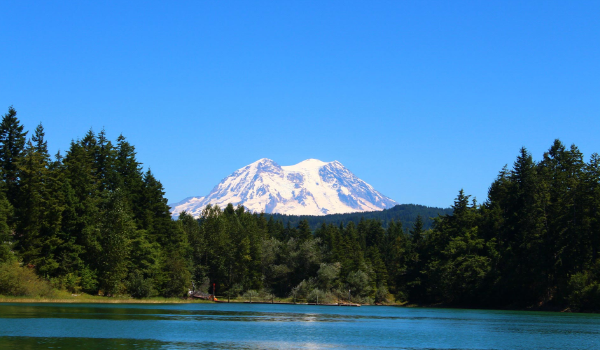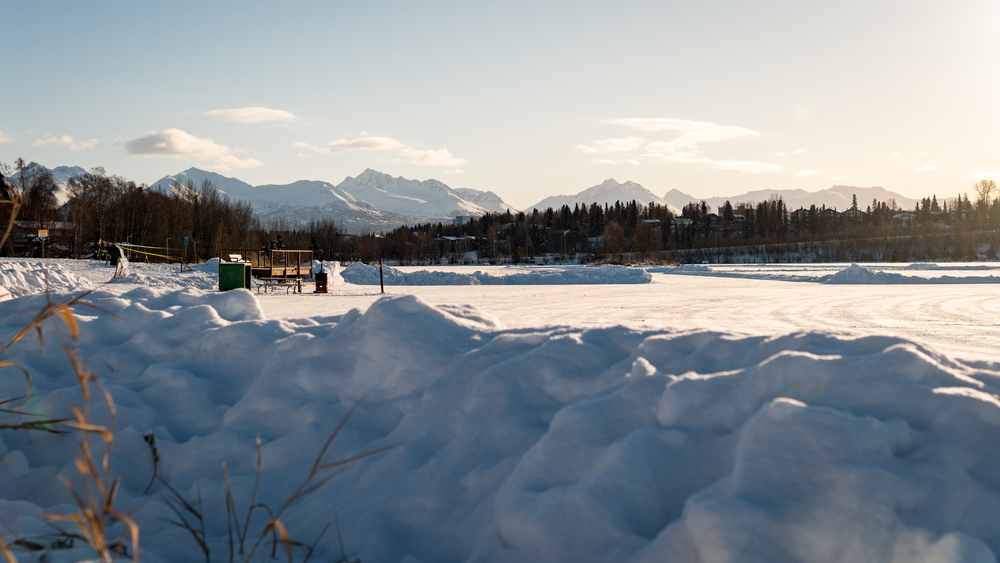Winter is the longest season in the state of Alaska. Above the Arctic Circle, the amount of daylight becomes variable. Depending on your location, temperatures may reach -50ºF and the sun can disappear for months at a time. The combination of sunless days and frigid conditions puts Alaskans at increased risk of seasonal affective disorder and addiction.
What are Winters Like in Alaska?
Alaska is an incredible place – if it was overlaid on a map of the Lower 48, it would stretch from Savannah, Georgia to Los Angeles, or from Texas to North Dakota. Because of its size, weather varies incredibly across the state. Alaskan winters usually begin in October and last through the month of March; temperatures and daylight during this time vary by region. While coastal areas may remain more temperate, the Southcentral is colder and covered in snow.
The Interior and Arctic regions, however, are a completely different experience. Temperatures may reach -20ºF during the winter. The lowest recorded temperature in Alaska is -79.8ºF at Prospect Creek, which was reached on January 23rd of 1971. The lowest annual “normal” temperature is considerably higher, at 9.3ºF in Utqiagvik (Barrow), the northernmost settlement in the state.
Perhaps the most famous aspect of winter in the Arctic Circle is the time without daylight. Utqiagvik enters a period of 67 days of darkness in the middle of winter. In Anchorage, the winter solstice has just 5 hours and 28 minutes of sun.
When we consider the combination of record low temperatures with longer periods of darkness, it isn’t hard to imagine that many Alaskans experience a decline in mental health during the winter months.
Depression During Alaskan Winters
Jennifer Gessert, a therapist based in Anchorage, described the myriad factors which contribute to the “winter blues” in the 49th state. She writes, “The intense darkness and cold weather make it a very tough time of year. [These are the] big reasons for the lower population up north. In the winter, there are only a few hours of daylight, and in some parts of the state, there is actually no daylight for part of the year.”
Seasonal affective disorder, abbreviated SAD, is prevalent in northern populations. It is a condition of lower mood attributed to lower levels of vitamin D, reduced serotonin, and increased melatonin. One study of 283 randomly selected Fairbanks residents found that 9.2% of participants met the diagnostic criteria for SAD. Women were more likely to display symptoms than men (a ratio of 3 to 2), and those under 40 reported higher rates of seasonal depression.
A capstone study from the University of Denver, Alaska Winter’s Relationship to Domestic Violence and Alcohol Abuse, covers the incidence of substance abuse and spousal abuse during the winter months. The researcher states, “Alaskans are ten times more likely to be affected by [Seasonal Affective Disorder] than people living outside of Alaska.” They also assert that binge drinking has developed as a response to loss of sunlight, feeling stuck inside, and enduring snow that covers one’s windows. These factors can lead to a host of negative behaviors, including substance abuse.
How SAD Leads to Substance Abuse for Alaskans
This form of depression can lead to a few different behavioral symptoms. For example, you may find yourself sleeping too much, overeating, and withdrawing from others. SAD can also lead people to try their hand at “self-medicating.” This term is somewhat misleading; people who drink or use drugs in response to depression are actually worsening their symptoms. While they may believe that numbing their emotions or consuming stimulants will improve their situation, in reality, that will exacerbate issues and open the door for chemical dependency.
Unfortunately, this response is far from uncommon. The National Institute on Drug Abuse (NIDA) has found that approximately half of all people with a mental health disorder will also experience a substance use disorder at some point in their lives.
Basically, the urge to alleviate the symptoms of seasonal depression can push a person to substance abuse. We encourage Alaskans dealing with SAD to try alternative means to address their mental illnesses.
Seasonal Affective Disorder Tips for Alaskans
We’ve compiled a few insider tips for surviving winter in Alaska. Here are our recommendations for managing seasonal depression without turning to drugs or alcohol.
Get outside. Sunlight is incredibly important to maintaining your body’s vitamin D production. To overcome moodiness and depression in the winter months, gear up and get outside. Skiing, sledding, and hiking are all great ways to get moving and soak up some sun.
Go for a drive. Spending a lot of time indoors can contribute to low mood. When you feel stuck inside, depression symptoms tend to worsen. A safe way to get out of the house is to go for a daytime drive. During the day, roads are clearer and temperatures are higher, which provides a safe way to get some time outside (while staying warm). Be sure that your vehicle is outfitted with the proper equipment before you set off!
If you can’t get your own sunlight, store bought is fine. If the weather is gray or it’s too cold to walk outside, consider purchasing a full spectrum light for your home. These devices have gained popularity over the past few years and can be ordered for an affordable price. Try to find a therapy light rated for at least 10,000 lux for best results.
Get professional help. If you find yourself reliant on drugs or alcohol, we encourage you to reach out to an addiction and mental health treatment center like Lakeside-Milam. We have created a treatment program specifically tailored to the needs of Alaskans. Click here to learn more about this program, and contact our admissions team when you’re ready to learn more.






